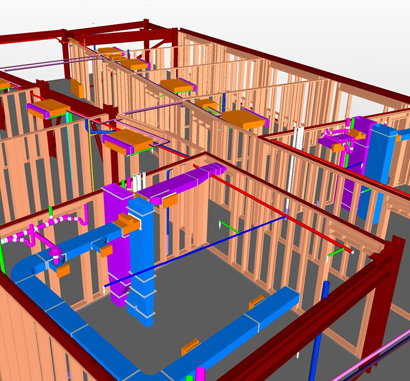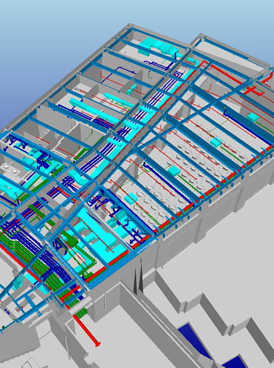Building better projects through the use of innovative construction applications.
Virtual Design and Construction uses innovative construction applications to build better projects and enhance team communication, collaboration, and visualization. Our in-house VDC Department works with the owner and design team to apply virtual construction technology through each phase of a project. Virtual models allow the entire team to weigh options, analyze potential impacts, and eliminate conflicts before field personnel step onto the project site. This approach saves time and money while allowing for a quicker, seamless delivery.



The limited above-ceiling space for MEP distribution prompted an intensive BIM coordination effort led by W.S. Cumby’s Virtual Design and Construction Manager. W.S. Cumby assembled a BIM team comprised of the architect, structural engineer, manufacturers, and trade subcontractors including structural steel, HVAC, plumbing, fire protection and electrical. Weekly virtual coordination meetings conducted from the field trailer identified hundreds of potential conflicts between structure, ductwork, piping and conduit and resulted in a complex yet buildable sequence of construction that would not have been possible without the use of this collaborative process.
Building Information Modeling can be used to demonstrate the entire building life cycle including the processes of construction and facility operation. Tools such as model-based layout and mobile-accessible BIM models allow for seamless integration from preconstruction to the field. This allows for precision in layout and logistics planning, resulting in the highest levels of quality control when coordinating critical components and/or equipment.

